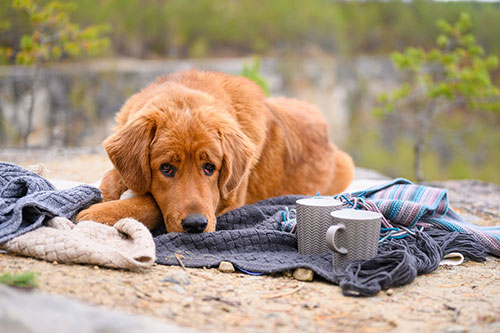
What is separation anxiety?
Separation anxiety is when a pet experiences distress and anxiety when it is separated from its owner. The problem may occur when there is partial absence of the owner (separated by barriers/doors) or complete absence of the owner (left home alone).
Separation anxiety is not a training problem, it is an anxiety disorder that needs to be managed with veterinary help. Pets with this condition don’t get used to being alone, unfortunately many get worse (more anxious and distressed) as time goes on.
What signs does the pet with separation anxiety show?
A pet with separation anxiety that does not have access to its owner may show many signs of distress and anxiety such as:
- Not eating
- Salivating
- Elimination of urine or stools
- Attempts to escape
- Destruction of objects (especially those with a human scent ie clothing and shoes)
- Destruction at exit points (ie doors, windows, carpet near doors, curtains)
- Pacing
- Trembling
- Freezing
- Panting
- Vocalisation (ie barking, whining or howling).
These signs are often seen within 30 minutes of the owner’s departure. Prior to the owner leaving, as the owner gets ready to go out, there may be rising signs of anxiety such as yawning, worried facial expression, lowered head and body, trembling, shaking off (as if wet), panting, pacing, sitting near exit points and increased watchfulness. When the owner returns there may be over-enthusiastic greetings, even after only a short absence.
Why does separation anxiety develop?
There can be many reasons that separation anxiety may develop in a pet including:
- Changes in the owner's schedule
- Moving to a new house
- Following a stay at a kennel
- Re-homing
- Being left alone for long periods of time as a puppy
- Changes in social relationships (ie new baby, partner or pet)
- Being trapped alone during a traumatic event (ie storm, robbery or fire)
- Impoverished or over-protected puppyhood
- Cognitive impairment
- Medical disease
- Deteriorating senses
- Loss of a companion pet.
- There may be a genetic basis for the dog's anxiety and the dog may concurrently have other anxiety disorders including generalised anxiety and noise phobia.
Important information about separation anxiety:
- Separation anxiety does not develop because the pets are spoilt or over-indulged by their owners, it develops because they are anxious and distressed.
- The addition of another dog does not often help the problem, as the pet seeks access to its owner (not other pets) and separation anxiety is also seen in pets in multi-dog homes.
- Dogs with separation anxiety are not bored or under-stimulated. Most dogs show signs of distress fairly quickly (within several minutes) after their owners have departed, so boredom is very unlikely in such a short period of time. Many of these dogs are provided with additional stimulation in the form of toys, food and even other pets, but these are generally ignored as they are too stressed to play or eat. Owners often report that the dog starts to eat, drink or play soon after they arrive home as they have not been comfortable enough to do this during their absence.
- The pets are not destructive or escaping because they are trying to seek revenge on their owners, they are actually very distressed and simply trying to get closer to their owners. If they appear 'guilty' when the owner arrives home, this is due to the dog's ability to read the owner’s angry or upset body language and tone of voice, the dog is fearfully trying to avoid being punished by the owner.
- Punishment should never be used as these dogs are anxious and distressed, therefore punishing them will only make them more anxious and inhibit them from learning to be relaxed. These dogs are suffering, they deserve our kindness and our compassion to help them.
How can separation anxiety be treated?
The aim of treating separation anxiety is to teach your dog to cope with being left alone. Treatment involves environmental management, behaviour modification and often medications.
If you are concerned your pet is experiencing separation anxiety then please contact us at Kirrawee Vet Hospital to organise a behaviour consultation.
